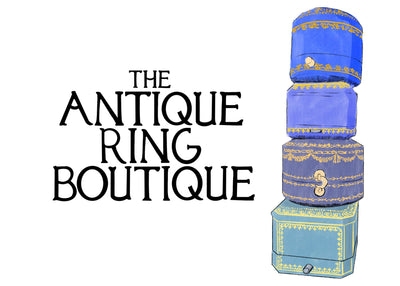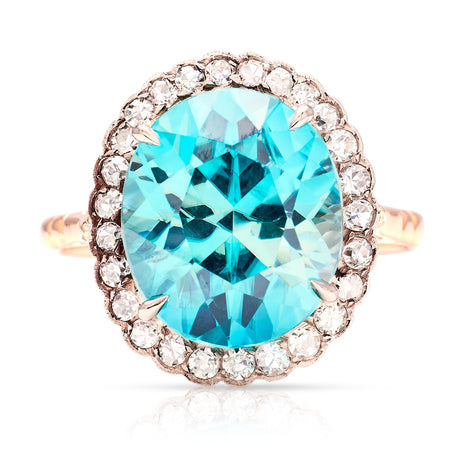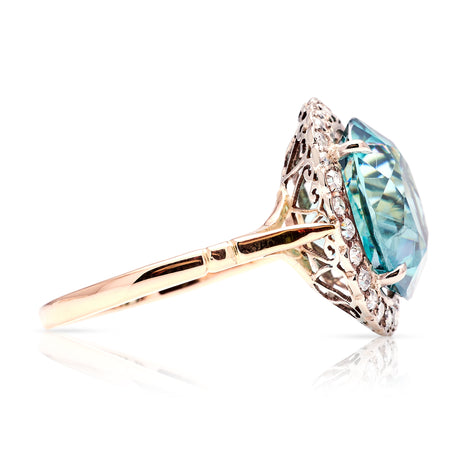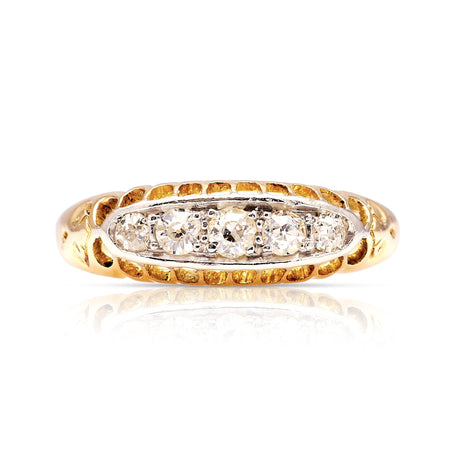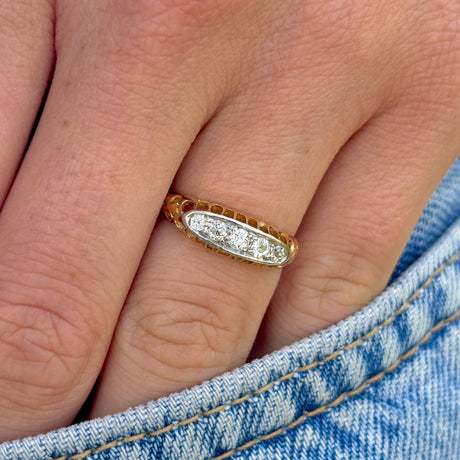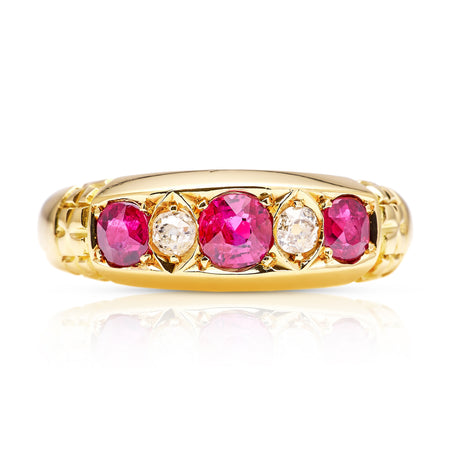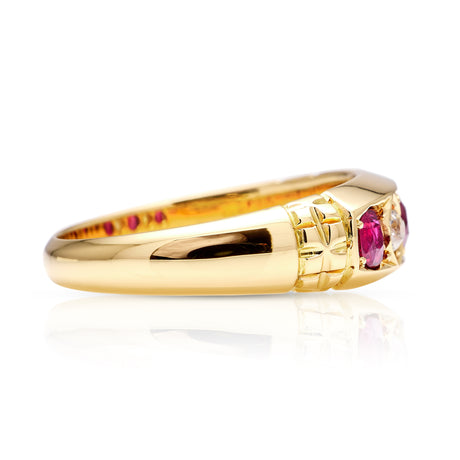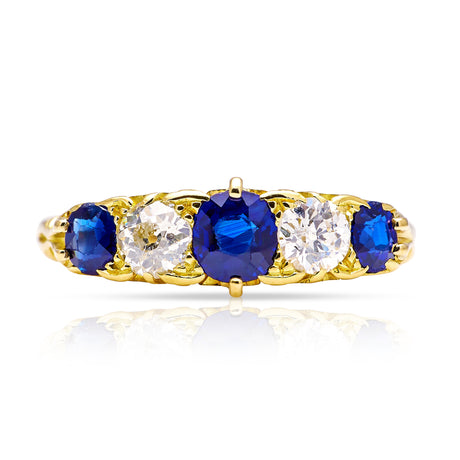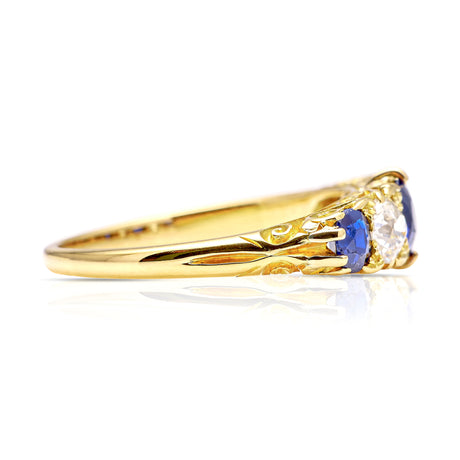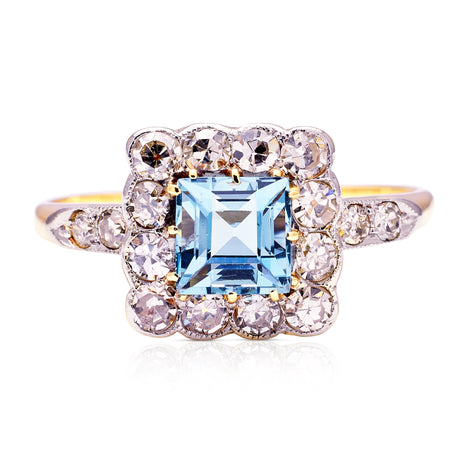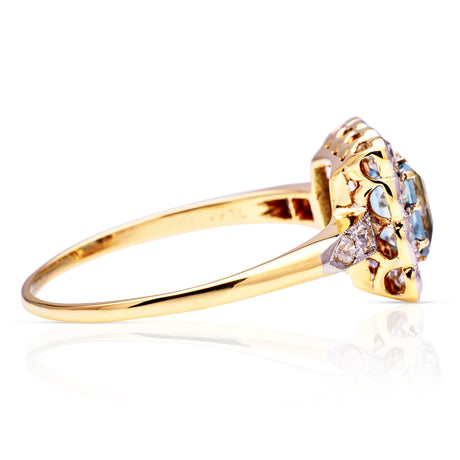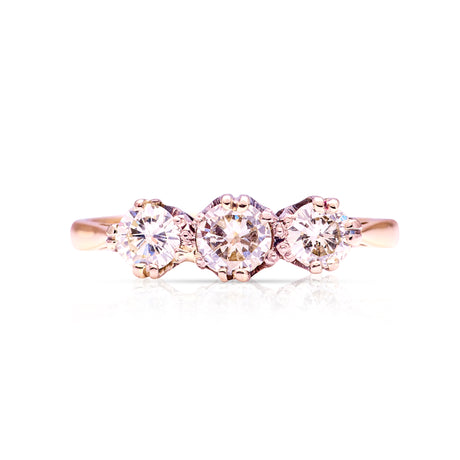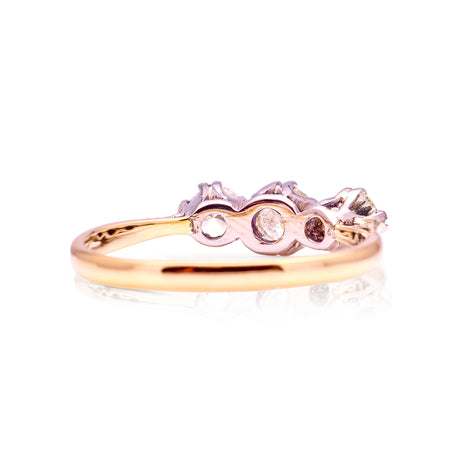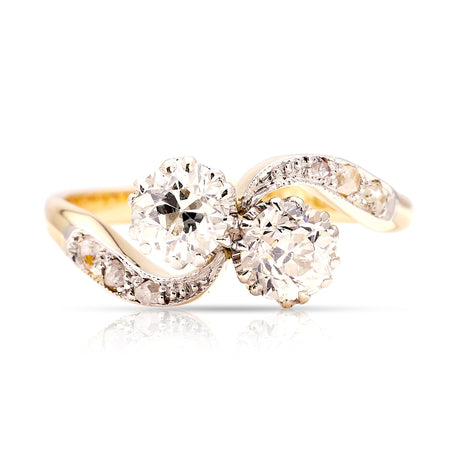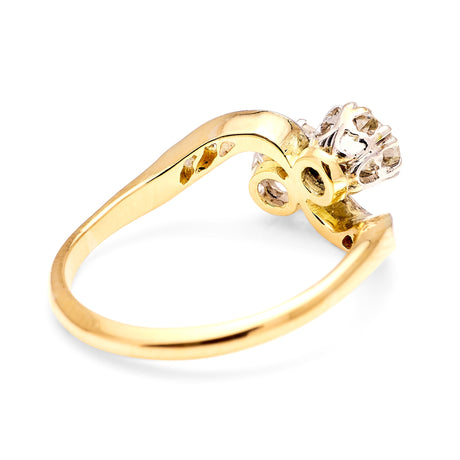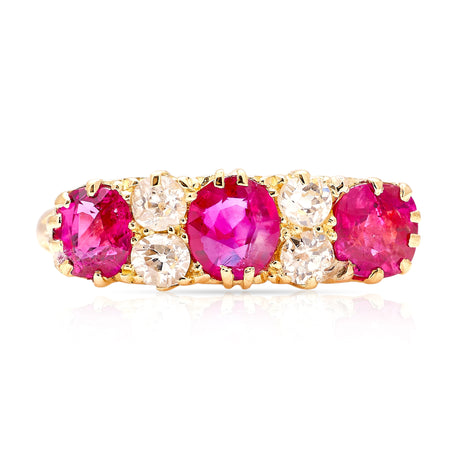The Edwardian period, 1901 to 1914, named after King Edward VII, is often seen as a bridge between the ornate Victorian styles and the boldness of the Art Deco movement.
It was a time of change, technological advancement, and shifting powers — all of which are reflected in its jewellery. After all, this early 20th-century era, although brief, was ultimately a time of refined elegance.

Despite the period’s challenges — such as World War I — Edwardian rings retained a sense of luxury and beauty. Characterised by delicate designs, intricate filigree and the use of diamonds and pearls, the era’s antique rings are a testament to the era's skilled craftsmanship.
They are not just pieces of jewellery but are also historical artefacts that tell the story of transitional periods in fashion and society.
This guide delves into the beauty and complexity of Edwardian rings. From gems to metals, we’ll get an insight into what makes these antique treasures so captivating and sought after. As we explore Edwardian society and ring design, we’ll uncover the allure that fascinates antique ring fans today.
Edwardian jewellery vs Belle Époque and Art Nouveau
The Edwardian era overlaps with the Belle Époque and Art Nouveau period.

The Belle Époque occurred between 1871 and 1914 describing a golden age in French, Belgian and European industry, culture and society. Art Nouveau lasted from around 1890 to 1910 and was an ornamental style of art popular throughout Europe and the USA.
Edwardian designs are celebrated for refined elegance, emphasising luxury and graceful lines with diamonds and platinum popular.
Art Nouveau jewellery was more about artistic expression and creativity, inspired by nature with free-form motifs and aesthetics more important than the cost of materials.
Belle Époque jewellery often features garlands, lace and bows inspired by French rococo decoration.
Edwardian style rings
Edwardian-style rings represent a pinnacle of technical innovation in jewellery design. This era witnessed a remarkable fusion of advanced metalwork and gemstone-cutting techniques, setting new standards in jewellery craftsmanship. A signature feature of these rings is the exquisite filigree work, reminiscent of delicate lace patterns crafted in platinum.
What cuts were used?
The Edwardian era was a pivotal time for innovation in gemstone cuts. It introduced several styles that enhanced the natural beauty of stones.
- The era saw the debut of the Asscher cut in 1902, a distinct square shape with trimmed corners that create an octagonal appearance. Renowned for its deep pavilion and high crown, the Asscher cut is celebrated for its exceptional brilliance.
- Another fashionable style was the Old European Cut. It featured a circular girdle with large facets and a pronounced high crown, offering a romantic, vintage sparkle.
- The Rose Cut, with its flat bottom and dome-shaped crown, was favoured for its subtle, soft glow.
- The Cushion Cut, known for its pillow-like shape with rounded corners, combined elegance with deep facets.
- The Old Mine Cut, a precursor to the cushion cut, had a squarish shape, a high crown and a distinctive large, flat top.
- The Marquise Cut, known for its elongated shape with pointed ends, was often chosen to maximise carat weight, creating an elegant and slender appearance.
- The Oval Cut provided an elongated, flattering shape on the hand, adding a unique twist to traditional styles.
These cuts collectively contributed to the distinct and enduring appeal of Edwardian-era rings.
What jewels were used?
In the Edwardian era, jewellery design emphasised luxurious and high-quality jewels. Edwardian diamonds, in particular, were trendy. Celebrated for their unrivalled brilliance and clarity, diamond rings were the quintessence of Edwardian luxury. They were often showcased in innovative cuts like the Asscher and Old European to maximise their sparkle.
Pearls, symbolising purity and sophistication, were another staple of Edwardian rings. These natural gems were frequently paired with diamonds, creating designs that epitomised elegance and refinement.
The era also had a penchant for vibrant, richly coloured gemstones. These were used to add a dynamic contrast to designs.
- With their deep blue hues, sapphires were particularly favoured, often serving as centrepieces and beautifully complemented by the cool tones of platinum settings.
- Emeralds, cherished for their vivid green colour, were used to inject colour into jewellery.
- Rubies, with their rich red tones symbolising passion and desire, were likewise frequently set alongside diamonds.
Edwardian rings also featured other gemstones like:
- Opals, known for their unique play of colour, ranging from fiery oranges to soft blues.
- Aquamarines, with their subtle pale blue tones, added a gentle, romantic touch. Meanwhile,
- Amethysts, known for their deep purple hues, contributed a bold yet refined appearance.
What metals were used?
The Edwardian era was a turning point in the use of metals for jewellery.
- For rings in particular, platinum began to take centre stage. Its strength and malleability allowed it to be drawn into fine wires and sheets, paving the way for the era's signature intricate designs and detailed filigree work. Its bright white hue also played a pivotal role, enhancing the brilliance of diamonds and other gemstones. This made it an ideal choice for engagement rings and other decorative pieces.
- Gold, particularly in shades of yellow and rose, continued to be used. It offered a warm contrast to the incredible sheen of diamonds and colourful gemstones. These gold hues provided a traditional touch amidst the rising popularity of platinum.
- The latter part of the Edwardian era saw the emergence of
white gold. As an alternative to platinum, white gold, alloyed with other metals, offered a similar aesthetic at a more accessible price point.
- During World War I, steel gained prominence due to the scarcity of precious metals. Its strength and versatility were used in various forms of jewellery, though it was less common in ring designs.
